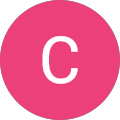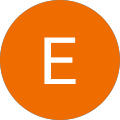
Built by Traders, for Traders
Traders Agency > Nasdaq
Stocks have been slaughtered this year… The S&P 500 is still down over 22%, while the Nasdaq 100 is off nearly 35%. One strategy for avoiding this drawdown was to reduce overall exposure to the market. And that worked for a while. But a trader can’t sit on the sidelines forever. At some point, you …
Today, I want to follow up on the weekly idea I posted on my TradingView page on Oct. 27. At the time, the Nasdaq 100 (NQ) futures market had just bumped up against resistance at its short term down trend line. This was a known level of U-turn, so we were expecting the market to reverse …
The post Nasdaq 100 Futures Hit the First Target appeared first on….
We’ve talked about a lot of different technical chart patterns over the past few months. We’ve covered a variety of bullish and bearish patterns as well as continuation and reversal patterns. Learning to identify technical trading patterns is a task that will pay dividends over time… But the individual candlesticks that form throughout each and …
The post How We Derive Meaning from Market Candlesticks appeared first on….
The market’s ability to rally while the previous market leaders fall tells me we are likely near the bottom of this bear market.
The post Watchlist Update: Finally, a Good Sign for Stocks appeared first on Stock Surge Daily.
….I share my top trade setups whenever I have a big, new idea for the market. And to invite a global audience, I provide the core chart and discussion on my TradingView page. This week, I’ve been watching the Nasdaq 100 (NQ) futures market, which has had a strong bullish push lately. However, now that some …
The post This Week’s Idea: NQ Hitting Daily Downtrend Line appeared first….
When talking about trading or investing, the term NASDAQ always comes up. It is short for National Association of Securities Dealers Automated Quotations. It is the hub for many investable and tradable securities. As a financial center, it undergoes regulation from FINRA.
NASDAQ began its operations in February 1971, founded by the NASD. At the time, it was revolutionary as it allowed investors to trade securities using a computer. It was a much faster method compared to the traditional way of contacting brokers.
As the world’s first global electronic exchange, it became the home to many global technological giants. Big names like Google, Facebook, and Amazon are all present in NASDAQ. In recent years, it also began introducing other forms of assets. NASDAQ operates 25 markets, with one clearinghouse and five central securities depositories.
Over 3,000 stocks are a part of the NASDAQ exchange, with it growing every year. The market later separated from the group to become a more transparent exchange. Later on, it merged with the Scandinavian company OMX to make NASDAQ accessible to more countries. The trading various assets available in NASDAQ include:
The creation of NASDAQ transformed the entire investing and trading space. Since transactions could now happen on a computer, the market became dynamic. NASDAQ is one reason why technology companies became accessible, leading to faster growth.
NASDAQ has survived many global crises, making it a resilient marketplace. It has gone through the dot-com bubble, the 2008 recession, and the recent COVID-19 Pandemic.
The Dow, much like the NASDAQ, are both market indexes. They represent a group of stocks in a particular field. NASDAQ focuses more on technology companies, while the Dow lists most companies on the New York Stock Exchange. The difference is that the NASDAQ is both an index and an exchange, while Dow is just an index.
When compared to the NYSE, both it and NASDAQ are trading exchanges. NASDAQ is electronic and does not have a physical trading space with brokers like the NYSE. Since the NYSE Is the oldest exchange in America, it retains much of its traditional methods, like the physical trading floor. NYSE doesn’t have an index like NASDAQ.
You can find the stocks of major technology companies on NASDAQ. You’ll often see popular names like Amazon, Tesla, and Microsoft pop up regularly. However, NASDAQ trading is not limited to that, as stocks from other industries often make it there as well. Companies like Starbucks and Pepsi are present, along with many others.
The security must register with the SEC to get a listing on NASDAQ. They must also justify their finances, liquidity, and governance as within the requirements for listing. It means that the company must be of sufficient size and supported by at least three market makers. There are four categories of assets, separated by market capitalization:
Global Select Market: This market consists of U.S. and international stocks. They have the most market capitalization.
Global Market: This market consists of international and U.S. stocks. They are within the mid-cap market capitalization range.
Capital Market: This market is about smaller capitalization companies. Most new launches start here.
American Depository Receipt (ADR): ADR allows you to trade in foreign markets without owning the native currency. NASDAQ buys a bundle of shares to sell on the exchange.
NASDAQ has a screener which contains all the stocks tradeable on the exchange. Unlike the NYSE, trading on NASDAQ is fully automated and computerized. You can trade stocks and assets from every region and country which has open doors to trading, dealing with NASDAQ themselves. Here are some of the sectors that traders can participate in:
NASDAQ also recently opened its doors to companies connected to more volatile assets. One of the most recent examples is the listing of the cryptocurrency exchange Coinbase. It was a decision that many deemed controversial, especially traditional investors. You also have the option of trading the NASDAQ 100 index.
The NASDAQ 100 index is a basket of the 100 biggest and most active stocks listed in the exchange. It is an amalgamation of different sectors. The index changes over time, depending on the performance of the 100 stocks within. To trade the NASDAQ 100, you speculate that all the top 100 stocks will have a general upward or downward movement.
To be able to trade the NASDAQ market, you need a broker. A broker is a company that acts as the middleman, as they have authorization to trade the market. Through them, they can place orders that allow you to buy or sell stocks. Many brokers are available, and many traders consider the broker to be one of the most crucial parts of the puzzle.
Back then, only companies and high net worth individuals could trade on NASDAQ. The broker changes that by becoming the qualified entity that can execute actions on their client’s behalf. As such, many brokers can allow you to open an account as low as $500 or $1000.
The best thing to do is to compare brokers, check reviews, and see what professionals are using. Some broker platforms seem enticing at first, but they can hit hard with wide spreads and high fees. Other brokers only offer you the best features if you deposit more money. Opening a brokerage account is a commitment and takes some time as you’ll need to verify your identity.
After opening an account, you’ll be free to download software that allows you to trade stocks. The software will have a ticker, and you can search for what you want to buy. You’ll open the stock chart and see price movement represented by lines or bars.
Then, you can buy stocks by setting the number of shares you want to buy. As long as your account has enough money to buy that amount, the transaction will go through.
When you press the buy button, a trade can go up or down. Depending on when you exit that trade, it can result in a profit or loss. When you look at charts, it can be easy to say that a stock goes up over time. However, seeing it in hindsight and experiencing it are two very different things.
When you are trading, you have to understand when you want to exit. You’ll have potential areas to exit the trade. One is a price point where you are happy to take profits. The other is where you have to leave before the loss becomes unacceptable. Most traders zero their accounts because they don’t understand they have to apply a stop loss.
You’ll also have to determine what type of trader you are. All of this depends on your personality and your risk profile.
Scalping: Scalping is about taking profit in short movements of the market. These usually happen on shorter time frames like the one-minute or five-minute charts.
Day trading: Day trading tries to take profit within the day. They often examine the 15-minute, 30-minute, and one-hour charts.
Swing trading: Swing trading is about taking profit in each upward swing of the market. Traders usually trade the one-hour to four-hour charts, but trades can last for days or weeks.
Position trading: Position trading is about profiting over the long term. These traders hold a position for weeks or months before exiting. Position traders are often closer to investors. They buy and hold, expecting the price of a stock to go up over time.
Another thing you’ll have to consider is your trading plan. You have to have a plan set on trading. It includes the strategy you want to use and how to apply it. It will also likely have contingency plans depending on different scenarios as you’re trading.
Many professional traders will attest to the inherent difficulty with trading. The learning curve is steep, and it requires a lot of willpower to remain consistently successful. The reason is that many people are not ready to handle a string of losses which can lead to emotional trading.
Rarely do any new traders get into professional trading fast. Another issue the stock trading space has is the multitude of information available. Many of those who want a trading career have more success working with an established company. Another option is to seek a teacher who has already navigated the market to success.
NASDAQ is one of the most established electronic trading exchanges in the world. Because of this fact, it remains a reliable option for both traders and investors. Every year the NASDAQ index changes — though most years are positive. The exchange also grows with new listings. Since 2016, NASDAQ has earned over $200 million in revenue from listings alone.
The expectation is that NASDAQ will continue to grow over time. Some years will consolidate or draw down as with the occasional bear markets. NASDAQ has continued in growth, rewarding those who continuously believe in it.

 Matt EberleMarch 27, 2024Very down to earth people. Within a month I got my investment back signing up with these guys. They help me get some of my investments on a better track. I've now been with trader agency for three month to my investment profile from a 6 percent return on my own. With there help going over my etrade profile to a 45 percent return in 90 days. Yes your using money to invest but, listen to these people and follow there directions you do just fine. Trader agency know the market and other customers will give you hints too.
Matt EberleMarch 27, 2024Very down to earth people. Within a month I got my investment back signing up with these guys. They help me get some of my investments on a better track. I've now been with trader agency for three month to my investment profile from a 6 percent return on my own. With there help going over my etrade profile to a 45 percent return in 90 days. Yes your using money to invest but, listen to these people and follow there directions you do just fine. Trader agency know the market and other customers will give you hints too. Chris BoaggioMarch 25, 2024I’m still learning but Ross is the man I wish I had the knowledge he has and I’m so thankful he is willing to share it with us. I’m sure, like me, most of you aren’t natural stock gurus but the more I listen to him the more I learn, I still have a very long way to go but the more time I put into it the more I learn under his guidance, thanks Ross.
Chris BoaggioMarch 25, 2024I’m still learning but Ross is the man I wish I had the knowledge he has and I’m so thankful he is willing to share it with us. I’m sure, like me, most of you aren’t natural stock gurus but the more I listen to him the more I learn, I still have a very long way to go but the more time I put into it the more I learn under his guidance, thanks Ross. Jeff LedsomeMarch 9, 2024I was new to trading and Ross and the team got me up to speed quickly. Just became a VIP and I’m looking forward to learning even more.
Jeff LedsomeMarch 9, 2024I was new to trading and Ross and the team got me up to speed quickly. Just became a VIP and I’m looking forward to learning even more. Erick FriasMarch 4, 2024Ross and his team are the real deal. There are no promises to make you an overnight millionaire but to work with you long term. They are honest, down-to-earth, and extremely knowledgeable. I am glad I made the decision to join them.
Erick FriasMarch 4, 2024Ross and his team are the real deal. There are no promises to make you an overnight millionaire but to work with you long term. They are honest, down-to-earth, and extremely knowledgeable. I am glad I made the decision to join them. Steve BarrettFebruary 21, 2024Ross Givens from Trader's Agency is an awesome resource to help you with your investing needs and investing education. I waited about three months to write this review to give myself time to see the impact on my portfolio and I have been completely satisfied. Ross has a no nonsense, simple approach that makes it easy for all investors and he takes the time to answer all questions on a weekly basis. Thanks, Ross and Traders Agency!
Steve BarrettFebruary 21, 2024Ross Givens from Trader's Agency is an awesome resource to help you with your investing needs and investing education. I waited about three months to write this review to give myself time to see the impact on my portfolio and I have been completely satisfied. Ross has a no nonsense, simple approach that makes it easy for all investors and he takes the time to answer all questions on a weekly basis. Thanks, Ross and Traders Agency! Robyn WoodFebruary 12, 2024Great Educational Webinars! Ross is a great educator. Explains things clearly and succinctly. Very good stock picks. I learned a lot! And I profited greatly! Thank you Ross
Robyn WoodFebruary 12, 2024Great Educational Webinars! Ross is a great educator. Explains things clearly and succinctly. Very good stock picks. I learned a lot! And I profited greatly! Thank you Ross Phil SFebruary 8, 2024Excellent experience with representative Chris Price. Most personable, understood my question/concern, and provided a professional resolution to my satisfaction. Many thanks for your assistance. Much appreciated.
Phil SFebruary 8, 2024Excellent experience with representative Chris Price. Most personable, understood my question/concern, and provided a professional resolution to my satisfaction. Many thanks for your assistance. Much appreciated. Orrin RatliffFebruary 8, 2024Stealth Trade at 5$ got me in the door. Very much a beginner at trading stocks. Ross and his team do a wonderful job at explaining the ins, outs, charts, highs, lows of trading market stocks. After a couple months i went in on the Fire Trade with them and have not looked back. When i have more funds available i will join the Alpha and Insider as well. The methods Ross uses are Top Notch. They are Smart and Wise with their clients financial Risk vs the Reward. They have a Customer for life here and will brag all day about Trader Agency gains.
Orrin RatliffFebruary 8, 2024Stealth Trade at 5$ got me in the door. Very much a beginner at trading stocks. Ross and his team do a wonderful job at explaining the ins, outs, charts, highs, lows of trading market stocks. After a couple months i went in on the Fire Trade with them and have not looked back. When i have more funds available i will join the Alpha and Insider as well. The methods Ross uses are Top Notch. They are Smart and Wise with their clients financial Risk vs the Reward. They have a Customer for life here and will brag all day about Trader Agency gains.

+1-888-483-5161
Monday – Friday
9:00 am to 5:00 pm EST
20 North Orange Avenue
Unit 1100
Orlando, Florida 32801
THIS MATERIAL IS OFFERED FOR EDUCATIONAL AND GENERAL INFORMATIONAL PURPOSES ONLY. NO INVESTMENT ADVICE OFFERED.
This is an advertisement for online information courses, workshops, classes and other educational programs relating to finance and investing. It is not an advertisement for investment advice. Pursuant to FTC regulations and federal law, Traders Agency, LLC intends for the information in this advertisement to be truthful and not misleading. Accordingly, any and all readers of this advertisement (this means you) are fully informed that none of the information, material, or courses that Traders Agency, LLC offers constitute investment advice as defined by the SEC and by federal law. These materials do not take into account a subscriber’s (this means your) particular investment objectives, financial situations or needs and is not intended as a recommendation, offer or solicitation (this means to you) for the purchase or sale of any security or investment strategy.
Under SEC regulations and federal law, the purchase, sale, or advice regarding any security, other financial instrument or system can only be performed by a registered/licensed industry representative such as, but not limited to, a registered investment advisor. It is very important todo your own analysis before making any investment based on your own personal circumstances.
Investing involves substantial risk and results are not guaranteed.
Neither Traders Agency, LLC nor its principals or affiliates are registered investment, legal, or tax advisors or broker/dealers.
Traders Agency, LLC is not registered with the SEC or licensed as an investment adviser. We do not offer investment or financial advice. Individual subscribers (this means you) are solely responsible for confirming the accuracy and appropriateness of the provided information for their own uses with their personal tax, finance, or legal advisor.
INVESTING INVOLVES RISK, INCLUDING THE POSSIBLE LOSS OF PRINCIPAL. PAST PERFORMANCE IS NO GUARANTEE OF FUTURE RESULTS. RESULTS ARE NOT GUARANTEED.
Finding Trading Patterns in Nasdaq 100 Futures
Today, I am going to explain how to recognize market trading patterns. Being able to spot specific market patterns is crucial to knowing when to buy and/or sell a particular market. But how do we go about figuring out what the market is doing? Well, we rely on our time frame charts to give us …
The post Finding Trading Patterns in Nasdaq 100 Futures appeared first on….